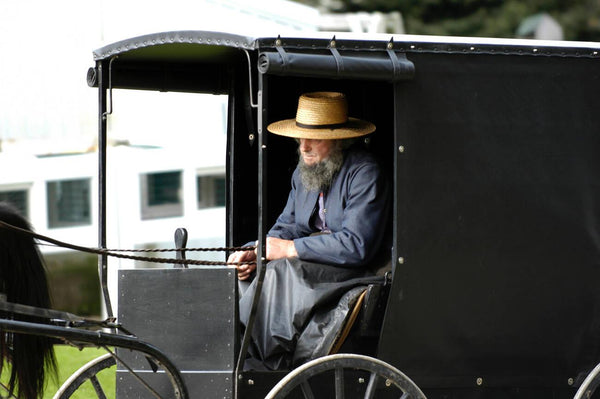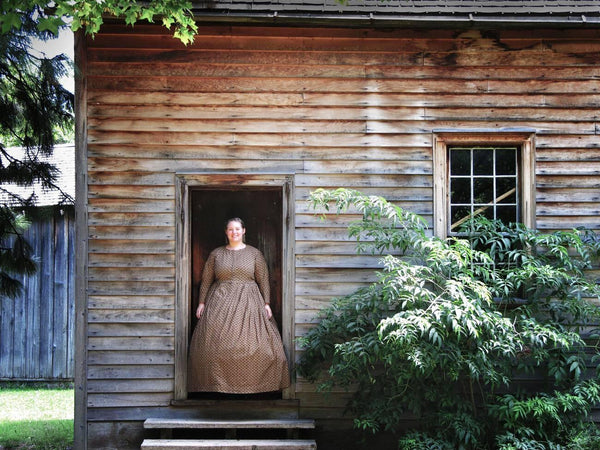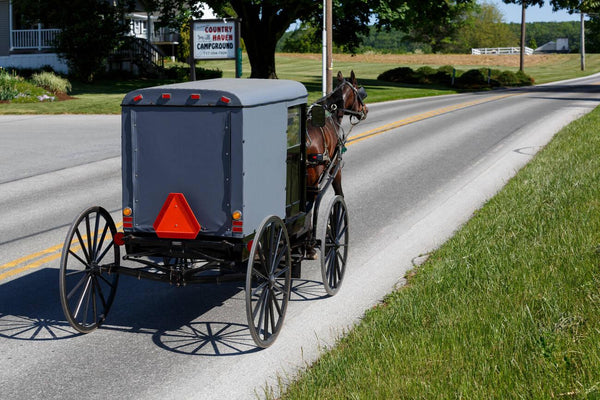One of the most raging discussions among Anabaptist communities is the comparison between Old Order Mennonite and Amish. Although both are similar in many aspects, there are some key differences that set them apart. In this article, we will explore both groups’ history, culture, and traditions to better understand their similarities and differences.
What this article covers:
- Old Order Mennonite History
- Amish History
- What Are the Differences Between Mennonites and the Amish?
Old Order Mennonite History

Old Order Mennonites are a group of Swiss German and south German heritage who practice a lifestyle without some elements of modern technology. They have communal church practices that originated in Indiana in 1872. The Mennonites are an ethnoreligious community that began in the Radical Reformation and is dispersed in small colonies throughout the Americas. In Canada, they were organized under the leadership of Jacob Stauffer in 1889 at Pike, Earl Township, Lancaster. The Old Order Amish Mennonite Church is a Christian group primarily found in North America.
Origins
The Old Order Mennonites trace their origins to the Radical Reformation of 16th-century Europe. This was a period when Anabaptists rejected state churches and sought to return to what they believed was a more authentic form of Christianity. They were persecuted for their beliefs and eventually migrated to North America, where they established communities based on their shared values and traditions.

Practices
Old Order Mennonites practice traditional Anabaptist worship and church practices such as non-resistance, adult baptism, plain dress, and avoidance of certain modern technologies such as cars or electricity. They also emphasize communal living, with members sharing resources and responsibilities within the community.
Today
Today there are several Old Order Mennonite groups with varying levels of adherence to traditional practices. Some groups still use horse-and-buggy transportation, while others have adopted more modern forms of transportation, such as cars or buses. Despite this diversity, all Old Order Mennonites continue to share common beliefs about faith, family, and community that have been passed down through generations.
Amish History
Now that we’ve looked at the Old Order Mennonite history let’s look at a brief history of the Amish.
The Amish are a religious group with a rich history. They trace their roots back to the Protestant Reformation in 16th-century Europe when Anabaptists began to form. The Amish church was officially established in 1693 after a schism in Switzerland within a group of Swiss and Alsatian Mennonite Anabaptists led by Jakob Ammann.
Amish communities then spread throughout Europe, including Switzerland, Alsace, Germany, Russia, and Holland. In the 19th and 20th centuries, many Amish people emigrated to North America and settled mainly in Pennsylvania. Today there are over 300,000 Amish living in the United States and Canada.

The Amish have maintained their traditional beliefs and practices for centuries. They reject modern technology such as cars and electricity, preferring to use horse-drawn buggies for transportation and gas lamps for light. They also practice simple living, emphasizing community values such as humility and respect for others.
The Amish way of life has been largely unchanged since its beginnings in Europe hundreds of years ago. Despite this long history, they remain one of the most misunderstood religious groups today.
Why The Amish & Mennonites Split
One of the most overarching questions most people ask is why did the Amish split from the Mennonites?
The two groups share common historical roots, but they eventually split over differences in church reform. This split happened in 1693 when a Swiss Anabaptist leader named Jakob Ammann separated from another Anabaptist community, leading to the formation of the Amish.
The main reason for the split was Ammann’s strict interpretation of religious doctrine, which was seen as too extreme by other Anabaptists. For example, he firmly believed in shunning those who disobeyed church teachings, which many Mennonites rejected. They also disagreed on other issues, such as being separate from the world and using only German in worship services.
When the two groups split, they each developed their own distinct practices and traditions. The Amish eventually moved to North America, while the Mennonites spread throughout Europe and later across the world.
What Are the Differences Between Mennonites and the Amish?
There are many differences between the Mennonites and the Amish based on their unique beliefs and practices. They include:
Technology
The Amish community’s views on technology are far stricter than the Mennonites. They reject the concept of technological advancement for its own sake, and their approach to cars, electricity, and computers is thoroughly and meticulously considered.
In Amish communities, you’re far more likely to find kids playing with Amish faceless dolls than you’d ever be to find them playing video games. Similarly, you’ll find hanging file baskets instead of filing cabinets. While it’s not at all uncommon for Amish communities to have telephones, they’re almost always located outside of the home to prevent unnecessary distraction.
While Old Order Mennonites still avoid owning cars or cell phones, many have started using technology in their everyday lives. For example, some Mennonites use computers for work and school, while others use cell phones to stay connected with family and friends.
Mennonites utilize technology in a way that supports their traditional way of life. To assist with the labor-intensive work of farming, they might, for instance, use tractors and other farming equipment. Instead of relying on electricity from the grid, they might also employ alternative energy sources like solar or wind turbines.
Dress Code
Mennonite vs Amish clothing is among the most recognizable differences between the two groups. Amish men typically wear solid-colored shirts with no buttons, black pants held up by suspenders, and a straw hat when outdoors.
Both Mennonites and Amish make an effort to dress modestly in accordance with their religious views. They refrain from donning showy or exposed attire as well as goods made of synthetic fabrics like nylon or polyester. Instead, they favor wearing garments made of natural materials like cotton or wool.
Overall, the differences between Amish and Mennonite clothing are pretty subtle, but it is still worth noting that the two groups have their own distinctive styles.
Men’s Dress Code

Mennonite men frequently dress similarly to Amish men, though they may also don more contemporary items like jeans or khakis. Compared to Amish women, Mennonite women normally dress more conservatively, however they occasionally don brighter hues and designs.
Men in both communities are often seen wearing hats, but here’s a difference between Amish and Mennonite hats. While Mennonite men’s hats are traditionally straw, Amish men may choose to wear other materials, such as felt or wool.
Women’s Dress Code
Amish women are known to almost constantly wear their head coverings, even indoors. Old Order Mennonite women, on the other hand, can remove their head covering as soon as they’re inside because it’s only mandatory when outside. That being said, there isn’t a huge difference when it comes to Mennonite vs Amish head coverings. In fact, both Amish and Mennonite women wear “kapps”.
In addition to dressing modestly, both groups avoid adorning themselves with jewelry or other accessories that could be seen as vain or ostentatious. This includes avoiding makeup and nail polish for women, although some Mennonite women may choose to wear it in moderation.
Education
Amish children typically attend school until the eighth grade, after which they pursue an apprenticeship or start working on the family farm. Education beyond this point is seen as unnecessary and can even lead to assimilation into mainstream society.

The Amish believe that beyond elementary school, vocational training is sufficient for success in their society. This means they focus more on practical skills such as farming and carpentry than academic subjects like math and science.
In terms of curriculum, both the Amish and Mennonites emphasize basic skills such as reading, writing, arithmetic, and religion. However, there are some differences between the two groups when it comes to technology use in the classroom. While the Amish generally avoid modern technology, some Mennonite schools may allow limited use of computers or other electronic devices for educational purposes.
Parents typically run schools in the Amish community, and teachers are usually volunteers from within the community. Schoolhouses are often small and may have only one or two rooms. The land is donated by a local family, and the building itself is typically constructed by members of the community.
On the other hand, Mennonite schools are typically larger than Amish schools and may offer more advanced classes, such as algebra or science. The teachers in Mennonite schools are usually certified professionals, and the curriculum is often based on state or provincial standards.
Mennonites also tend to embrace modern technology in the education sector. You may find computers and other electronic devices in Mennonite classrooms, although their use is usually limited to relevant educational topics.
When it comes to teaching methods, both groups rely heavily on rote memorization and repetition to ensure that students learn the material quickly and accurately. In addition to this traditional approach to instruction, some Mennonite schools may also incorporate more progressive methods, such as project-based learning or problem-solving activities, into their classrooms.
Transport

The Amish typically rely on horse-drawn buggies as their primary mode of transportation. This is because the Amish believe in living a life separate from modern technology and conveniences. They also believe in living a life close to nature, so they prefer to use horses instead of cars or other motorized vehicles. The horse-drawn buggy allows them to travel slower, which helps them stay connected with their community and environment.
In contrast, Mennonites have more freedom when it comes to transportation choices. While some Mennonites still use horse-drawn buggies, others opt for cars or motorized vehicles. This is because they don’t adhere strictly to the same level of separation from modern technology as the Amish do. Instead, they focus more on ethical life based on Christian principles. As such, they may choose to use technology if it helps them to serve their community better or advance their faith.
Conclusion
Despite these differences between Mennonite vs. Amish, these communities have remained strong over centuries and continue to practice their traditional values today. They are living reminders of a time when faith mattered more than modern conveniences, and their commitment to their beliefs is an inspiration to us all.
Did You Find Our Blog Helpful? Then Consider Checking:
- How Do Amish and Mennonite Women Differ?
- Types of Amish
- Do Amish Go to School
- Amish Education
- Amish School House
- Facts About Amish Schools
- Amish vs Quaker
- Mormons vs Amish
- Do Amish Pay Taxes
- Do Amish Go to Doctors
- Amish Health Secrets
- Amish Lifestyle
- What Do Amish Do for Fun
- How Do the Amish Keep Food Cold
- Amish Technology

